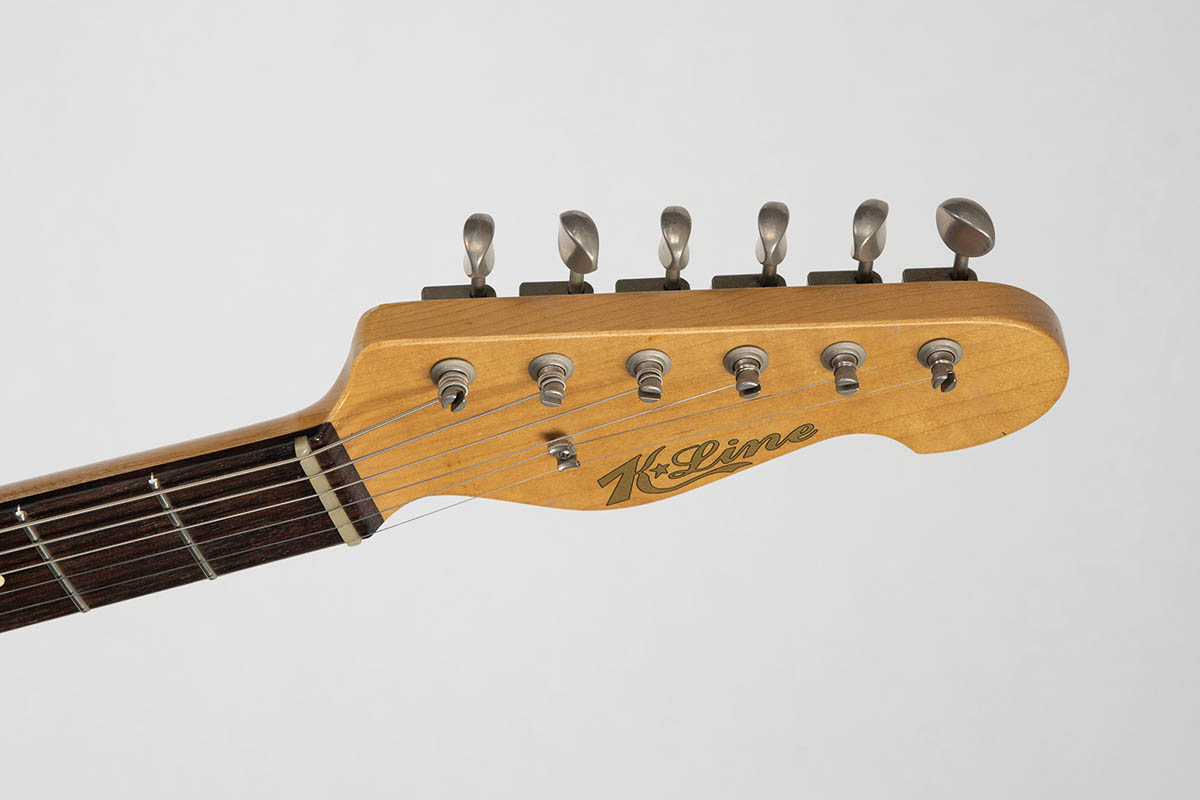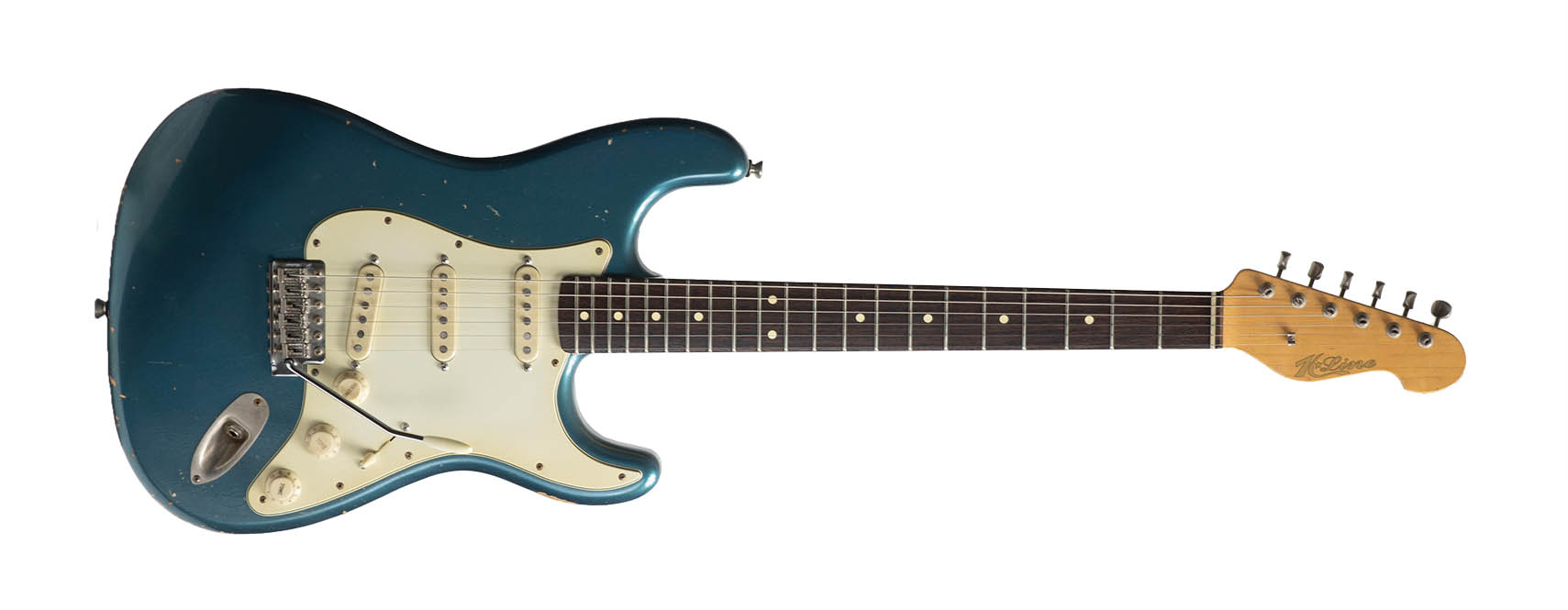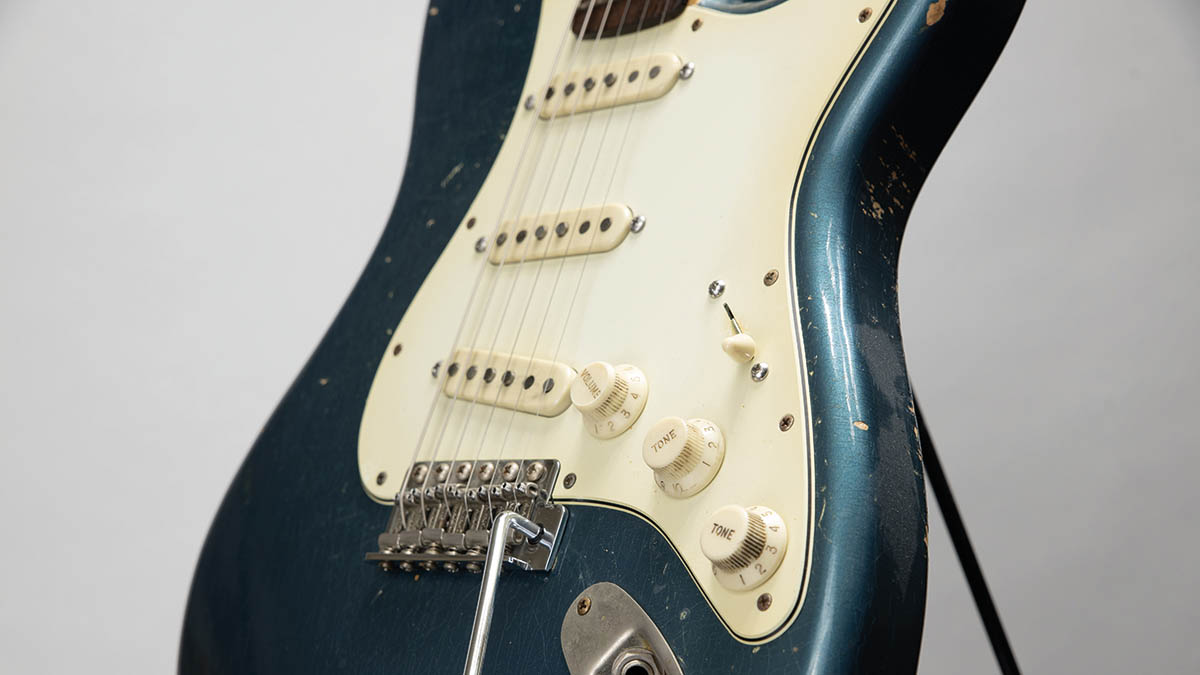GuitarPlayer Verdict
A top-flight S-style guitar with vintage leanings but cleverly updated to suit the modern player. Superb playing feel and compelling tone.
Pros
- +
Wonderful build and finish.
- +
Rich, multidimensional tones with a little muscle.
- +
A guitar to compete favorably with many pricier models.
Cons
- -
It will be pricey for some budgets, though it’s still much less than many high-end boutique makes.
You can trust Guitar Player.
It sometimes seems like everybody and his cousin is making quality reproduction bolt-neck S- and T-style electric guitars. Yet when you get your hands on a great one, the results can be eye-opening and strangely enlivening.
While I admit to feeling jaded sometimes, this K-Line Springfield arrived like a Lake Placid Blue bolt from the great beyond to remind me how inspiring the 67-year-old design remains, especially when it’s well put together and thoughtfully updated to suit the needs of contemporary players without watering down the vintage-correct tone and vibe.
Chris Kroenlein began making his K-Line guitars as a sideline in 2004, buying bodies and necks from a third-party supplier. Since around 2010, however, he has put his considerable woodworking skills to good use. Today, his guitars’ bodies and necks, along with roughly 95 percent of the total components, are fabricated in-house, an effort that includes pickup winding.
Outwardly, the Springfield looks much like you’d expect a guitar built in line with the early ’60s Stratocaster template to look. But once you apply the kind of minute consideration to every aspect of the build, as Kroenlein clearly does, the results soar beyond the general archetype.

As Kroenlein tell us, it all begins with the wood. “Specifically dry, resonant wood,” he says. “I hand select it based on moisture content, and I spend a bit extra to get the driest wood possible.”
After that, he says, it’s down to “hardware that performs as needed, quality pickups and electronics, paying attention to the fit and finish, and the little things: a nice hand-rolled fretboard edge, saddle screws that aren’t sticking up out of the saddle too much, and proper neck-pocket angles to ease the setup and feel.”
The wood in this case includes an alder body and a maple neck with a chocolatey dark rosewood fingerboard that features appealing dark-red striping in the grain. If the finished guitar’s seven-pound total weight and lively, ringing acoustic response are anything to go by, Kroenlein has certainly selected them well and carved them just right.
All the latest guitar news, interviews, lessons, reviews, deals and more, direct to your inbox!
The neck sports a rounded “C” profile that measures .850 inch deep at the first fret. It’s extremely comfortable in the hand, thanks to the combination of those rolled fingerboard edges and the thin, tactile French-polish technique Kroenlein uses on its back, which emulates a well-worn vintage nitro finish.

The body itself is shot in nitrocellulose lacquer in a beautiful Lake Placid Blue, and gently aged with checking, dings and scuffs to emulate a road-worn guitar. I also appreciate little cosmetic touches, like the rounded edges of the pickup covers, the yellowing of the pickguard, and the soft patina of the hardware and screws, all appearing very accurate and natural. (Non-aged finishes and parts are available as well.)
Hardware includes a six-screw Wilkinson vibrato that boasts vintage styling, with contemporary updates such as a wobble-free push-in arm, staggered string holes for improved intonation and tension, and vintage Kluson-style tuners.
Pickups are K-Line’s ’64 single-coil Strat-style set, measuring in the low 6k-ohms range, with a hot bridge pickup that’s wired to its own tone control. The neck and middle pickups share the other tone control.

I tested the Springfield through a tweed Deluxe-inspired 1x12 combo, a Friedman Small Box head and 2x12 cab, and a Neural DSP Quad Cortex modeler into studio monitors, and found it to be a great and inspiring S-style guitar by any measure. It’s hard not to harbor some love of the design, as iconic as it is in the history of the electric guitar and rock music, in general.
But I’ve often had something of a love-hate relationship with the Strat, sometimes finding the hardware clunky and awkward, and the tones too thin and bright to work for me, no matter how much great music others have managed to make with the guitar.
Not so in this case. Far from it, in fact. It’s noteworthy that, although it wasn’t yet this guitar’s turn in the review queue, I couldn’t stop picking it up and playing it the day after it arrived. By sundown it was still in tune, and I realized I hadn’t twisted a single tuner since I pulled it out of the case.
The Springfield’s playability is so good as to dispel all previous reservations. There were no strings dropping off fretboard edges, no sharp saddle adjustment screws, and no buzzing hardware or dead spots. What’s more, the tone was both archetypically Stratty and appealingly trenchant and inspiring. It’s bright, glassy, snappy and quacky, yes, but also muscular, rich, multidimensional and compelling.
It’s the first Strat-style guitar I’ve played in a long while that I felt could easily step in when my Les Paul broke a string midsong, for example, while still hanging in for the next tune that required a mix of gnarly Tele-like twang leads and clean rhythm jangle. Through my testing, the Springfield kept on inspiring that gut instinct a player gets that declares, “This is just a great guitar!”
There are other high-end makers out their pursuing the T- and S-style formulae to produce electric guitars that sell for two and three times the cost of this K-Line, not to mention Fender’s own venerable Custom Shop offerings. I’ve played plenty of them, and while many have been outstanding, I really don’t feel that any have been demonstrably better than this guitar.
Sometimes you just have to forget the price tag – and maybe the brand name as well – to make a truly objective evaluation about a piece of gear, but when you’re a little shocked to learn that this guitar doesn’t cost $5,000 or more, that’s really saying something.
For that, and for its all-encompassing delightfulness, the K-Line Springfield earns an Editors’ Pick Award.
Specifications
- PRICE: $2,650 direct
- NUT WIDTH: 1.650” bone
- NECK: Maple, medium “C” profile (.850” at 1st fret)
- FRETBOARD: Rosewood, 25.5” scale, 10” radius
- FRETS: 21 medium (6125)
- TUNERS: Vintage-style
- BODY: Solid alder
- BRIDGE: 6-saddle/6-screw Wilkinson vibrato with push-in arm and staggered string holes
- PICKUPS: Three hand-wound K-Line ’64 single-coil Strat-style pickups
- CONTROLS: Master volume, tone for neck and middle, tone for bridge
- FACTORY STRINGS: Curt Mangan .010–.046
- WEIGHT: 7 lbs
- BUILT: USA
- CONTACT: K-Line Guitars
Dave Hunter is a writer and consulting editor for Guitar Player magazine. His prolific output as author includes Fender 75 Years, The Guitar Amp Handbook, The British Amp Invasion, Ultimate Star Guitars, Guitar Effects Pedals, The Guitar Pickup Handbook, The Fender Telecaster and several other titles. Hunter is a former editor of The Guitar Magazine (UK), and a contributor to Vintage Guitar, Premier Guitar, The Connoisseur and other publications. A contributing essayist to the United States Library of Congress National Recording Preservation Board’s Permanent Archive, he lives in Kittery, ME, with his wife and their two children and fronts the bands A Different Engine and The Stereo Field.


